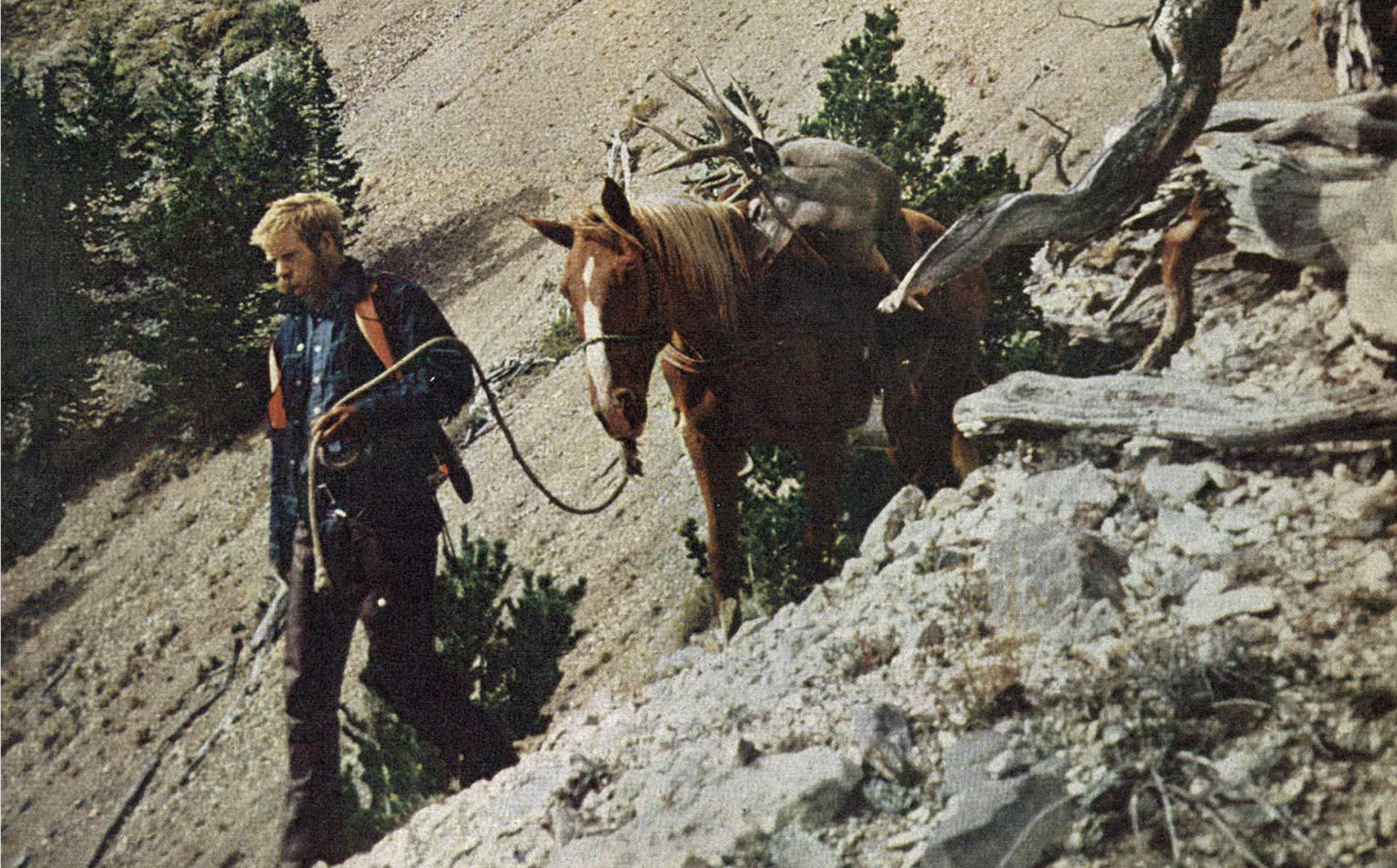THE CROSSHAIRS lurched away from the aiming point on the buck’s chest as a sharp jolt of pain tore through my left arm. Dropping the rifle from my shoulder, I jerked the tight sling from around the cramping arm and flexed the elbow until the muscle spasm relaxed. Then I quickly looped the sling back around my arm, brought the rifle to my shoulder, and settled the crosshairs back on the deer’s chest.
He was watching me intently, facing me dead on with his head low and ears focused at me in the customary pose of a buck mule deer trying to make up his mind. For five minutes, perhaps a bit less, I’d sat on the stony hillside above him with my Ruger M-77 .280 aimed at his chest. He was big, and his high and heavy antlers were festooned with strips of dried velvet. Normally, I would have fired at such a trophy as soon as I could get my rifle into action. And ordinarily he would have shifted into high gear just at the sight of me. But the same force that kept me from shooting also kept him from running.
That force was another deer lying half hidden in a sparse clump of evergreen scrub. I couldn’t see anything but its hindquarters, but I had a notion it might be an even better trophy than the buck standing guard. From what I could see, it was too big to be a doe, and besides we were above doe country. This was old buck territory, the top of Sheep Mountain. And the way the visible buck was acting made me suspect that he was guarding a patriarch.
This was all guesswork, nothing more than a hunch. But trophy hunting calls for guessing and playing hunches, and turning down big bucks in the hope of finding an even bigger one. The buck I could see was a fine trophy in every way, and in another moment he might be gone. The buck in the bush might not be so good.
As these thoughts were nagging at me, the deer turned his head for a moment and looked at his pal. The partly hidden deer was moving. He was standing up. I figured that there would only be a moment to choose between the two and get off a shot. I thought the deer would get to his feet and look at his chum. He’d then follow the other deer’s gaze up to me, and in the next second they’d both be running. But it didn’t happen that way. The second buck just stood there. I could see his back, his side, and most of his legs, but not his head. All I could do was wait. My arm began to cramp again.
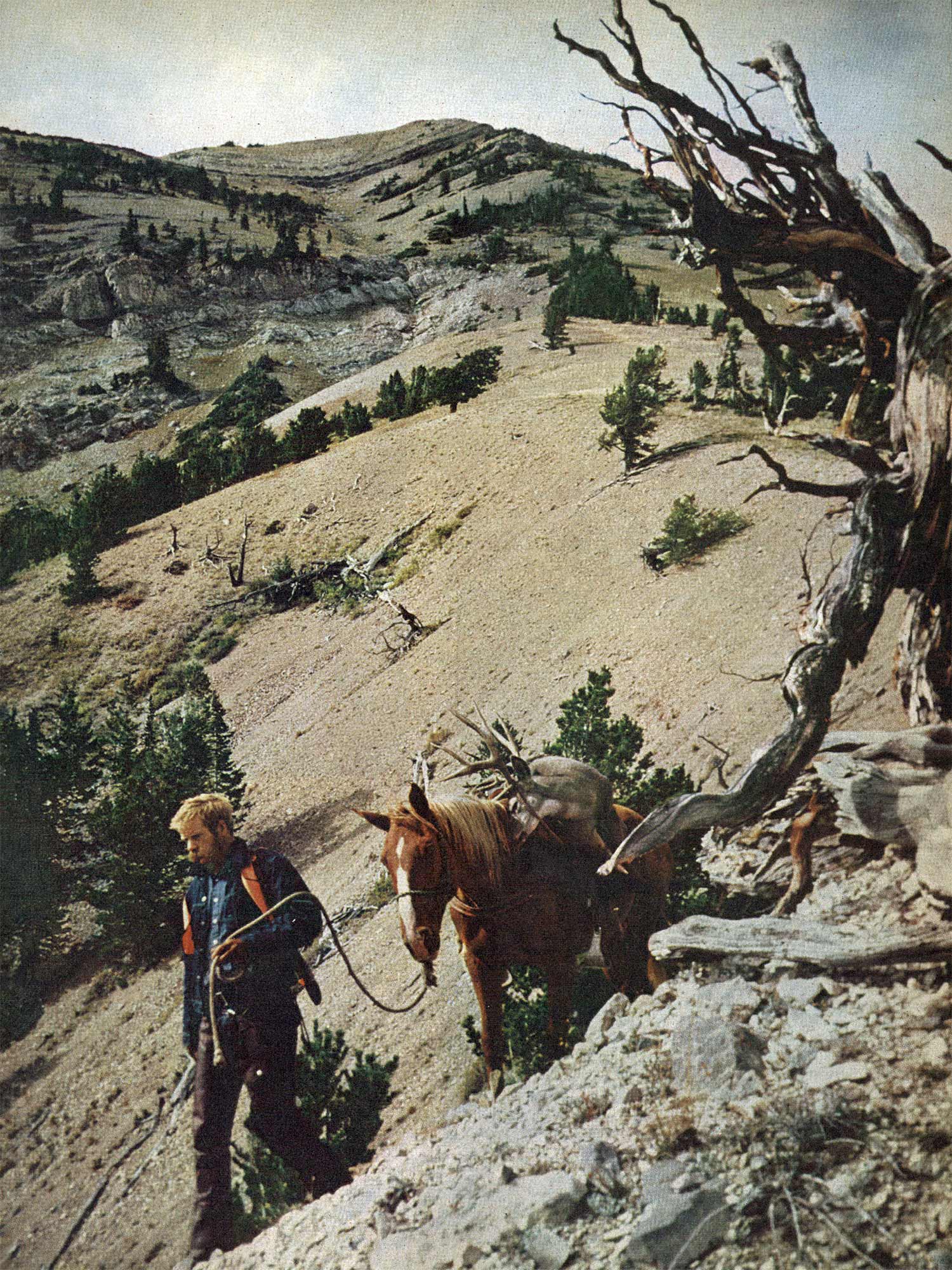
MY PAL FRED HUNTINGTON and I were hunting in the Greys River area of Southwestern Wyoming. Our outfitter and guide, Bud Callahan, operates the Box-Y Ranch and runs one of the slickest outfitting operations I know of. Fred, who is the founder and president of the RCBS-OMARK reloading tool company is a relentless hunter. Six months earlier we had hunted together in the African rain forests and each of us had taken a bongo. Though we have hunted together on four continents for some mighty exotic species, the lure of the big buck is as strong as ever. Nearly every autumn finds us in the high country looking for trophy mule deer.
I had hunted pronghorn with Callahan the season before, and I had been so impressed with his guiding, the beauty of the Grey’s River country, and the abundance of game that I had booked a hunt for Fred and myself the following season.
Box-Y hunters stay at the ranch in warm, comfortable bunk houses. Since the ranch is in the middle of prime game country, hunters don’t have far to go. But Callahan keeps horseback time to a minimum by trucking his riding stock close to the area to be hunted each day. By doing so, hours of uneventful horseback riding are reduced to a half-hour truck ride. You mount up before daybreak and make the final ride into the area chosen for the day’s hunt.
On the morning of our first day, the sun kissed the peaks just as we topped out on the mountain we would be hunting. Stopping to let my horse catch his breath, I twisted in the saddle and surveyed the incredible panorama.
Not too many miles to the west the Salt River Mountains glimmered like burnished copper. To the east soared the Wind River Mountains and Gannett Peak thrusting to an elevation of nearly 14,000 feet. Beyond the foothills of the Wyoming Range where we were hunting lay the sites of old Fort Bonneville and the Rocky Mountain Fur Company where mountain men had held the famous Green River rendezvous in 1835. To the north stretched the Snake River Range, the Gros Ventre Mountains, and the glistening tip of the Grand Teton.
Our hunting party had split here, and our California friends and their guides circled to the South. Fred and his guide and Bud and I had planned to hunt the upper part of the mountain by keeping on the ridge crests and glassing the meadows and draws below. The first time we looked over a precipice, four does and two smallish bucks broke out of cover 200 yards below and pogo-sticked single file around the hillside.
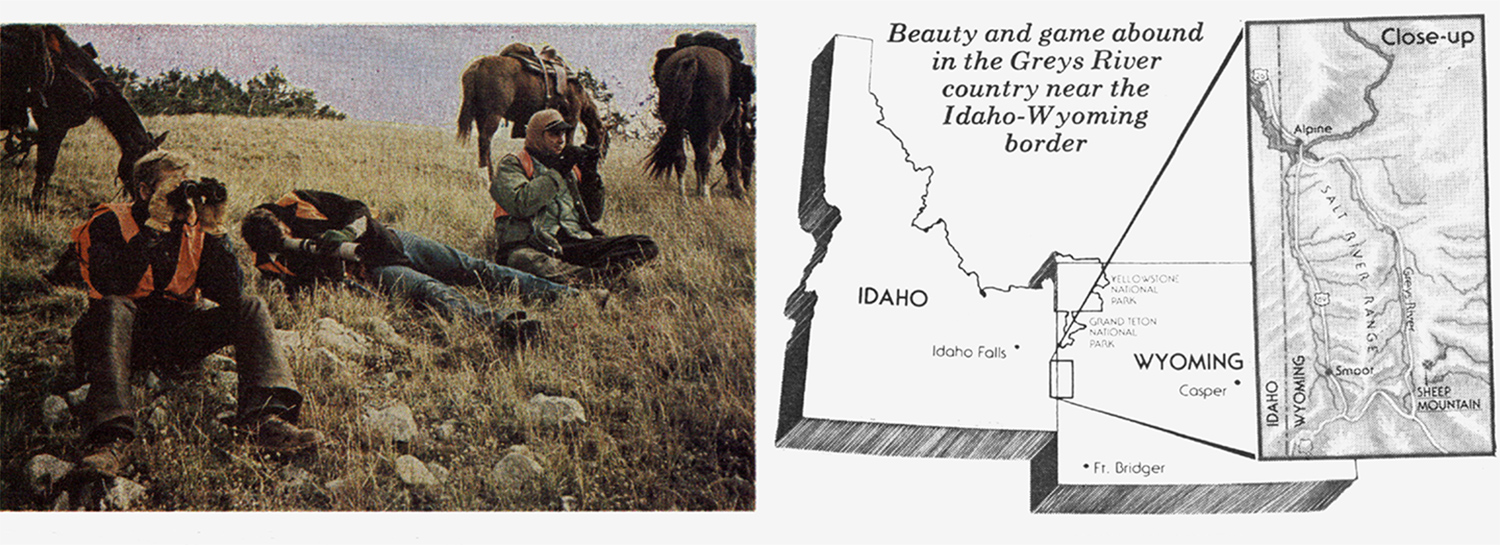
For the next three hours we didn’t see anything worthwhile, but just as we were settling down for lunch Bud caught sight of a fair buck at the edge of a timber boundary some 300 yards below us.
The boundary was on the backbone on a steep slope, and with luck the deer might be pushed out for an open shot. Fred’s guide took off on foot and circled behind the backbone, and Fred got into a solid shooting position with his rifle rested along a stubby pine. I stood just behind Fred with my camera ready, hoping to get a picture of the action. But the action never happened. After a tense wait the guide appeared from the timber. The deer had been there all right, he told us, but as he moved up behind the deer turned and ran the other way, refusing to cross open ground.
Later, stretching in the sun after lunch, I studied the sheer rock face of a mountain a few miles to the north.
“That’s Sheep Mountain,” Bud said.
“Do you ever hunt there?” I asked.
“Not often. It’s very tough to climb, but there are some good bucks there. Since it’s so rough most hunters leave it alone. That’s why the bucks get old and big.”
“Interesting,” I said, and then thought no more about it.
That evening at dinner Bud brought up the subject of Sheep Mountain again.
“There’s a way to take a horse up from the backside,” he said. “A Basque shepherd told me about it. It’s rough but we can give it a try.”
“I’m game,” I answered. “How about you Fred?”
“Count me out for tomorrow,” he said. “I’m going to take the day off.”
“In that case I’d like to go along,” said Ozzie Davis, a well-known international hunter from Heywood, California.
“That settles it,” I said. “Tomorrow it’s Sheep Mountain.”
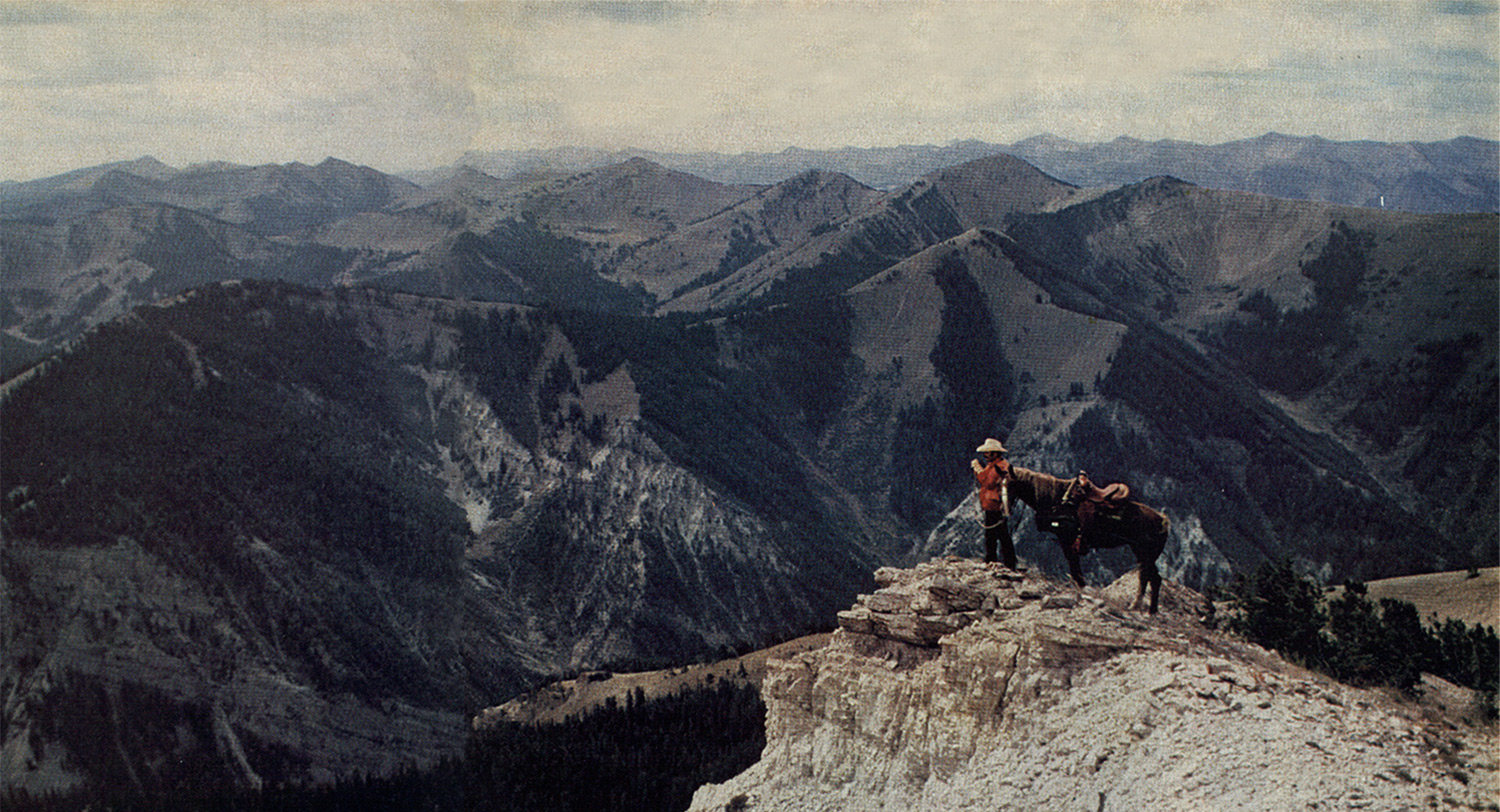
NEXT MORNING we were at the base of the mountain waiting for enough light to begin the climb. As we had ridden toward the mountain, an eerie chorus or coyote calls had drifted out of the darkness. Ordinarily I like to hear coyotes call, but this was different, mournful, as if to warn us away. If I had known the danger that awaited above, I would have heeded their warning.
As the darkness dissolved into gray gloom, we started up the mountain. The trail was easy enough at the start, winding around the lower slope, but after a while it narrowed and steepened in frequent switchbacks. At one point the trail, no wider than a horse’s hoof and notched into the mountainside, crossed a steep rock slide. The footing was treacherous. Fist-size rocks rolled like ball bearings under the feet of our horses.
We were almost across the slide and had only one sharp switchback to go when Ozzie’s horse slipped and fell to its front knees. Twice it struggled to regain its footing, but each time more loose stones gave way and it fell again. Growing panicky, the animal lurched wildly, lost its footing altogether, and fell back toward me and my horse.
The trail was so steep that Ozzie’s horse was full horse’s height above me though only a few feet ahead. When the horse started its backward fall it was actually falling down on me and my horse. I headed out of the saddle, but it was too late. Trying desperately to avoid the oncoming body, my horse reared on its hind legs. The trail gave way, and my horse toppled over in a twisting, rearward somersault. Somewhere in midair, I cleared the saddle and landed on my feet on the downhill side of the trail under the falling horse. Instinctively, I hit the ground running, trying to get out from under.
I must have been moving fast because I felt only the upside-down animal brush against my shoulder as I got clear. But now a new and even greater danger loomed. I was running down the 45° slope so fast I couldn’t stop. And I was running out of space in a hurry. Just a few yards ahead the slope disappeared into empty space. It was the sheer edge of a cliff!
Digging in the heels of my boots, I threw myself backward in a hard fall. When I hit the ground I clawed at it and felt myself slide to a stop only feet from the edge of disaster. For long moments rolling rocks kept pummeling me, and I remember a brief but terrible thought that the horse might be falling toward me. But when I raised my head to look, the horse was on its feet and apparently O.K.
After collecting my hat and making sure the horse wasn’t hurt, my only concern was for my rifle. Miraculously it wasn’t even scratched, thanks no doubt to the hard, molded plastic Koplin scabbard I was using. Ozzie hadn’t been so lucky. Though his horse was O.K., his custom rifle was a shambles.
From there on to the top of the mountain the trail got easier. Bud had been right about the deer on Sheep Mountain. The crest was a long, swaybacked ridge, and as soon as we got to the top we spotted four bucks at the other end of the crest. They were all good four-pointers (per side, Western count), and they ambled along with apparently no concern over our presence. Their behavior was confirmation that there had been little or no hunting on the mountain.
A careful glassing of the backside of the mountain disclosed but one solitary buck. He was a long way off, and Bud got out his spotting scope for a better look at his rack. He shrugged and gave me the thumbsdown sign.
What had started out as a sunny day changed rapidly as a weather front moved in. Low clouds scudded over the mountain, and heavy thunderheads rose on the horizon. The air turned chilly, and we huddled in the lee of the ridge as we glassed the clumps of trees and scrub.
After an hour or so we mounted up and made our way along the crest of the mountain. As we rode over the highest point the crest took a turn to the west and ran by a stand of timber. Since it was the time of day deer like to lie up, it looked like a good place for a short drive. Bud told Ozzie and me to ride around the timber and take shooting positions while he and the guide rode into the trees to push the deer ahead. Bud and the guide agreed to wait 15 minutes before beginning the drive. That would give Ozzie and me time to get into position.
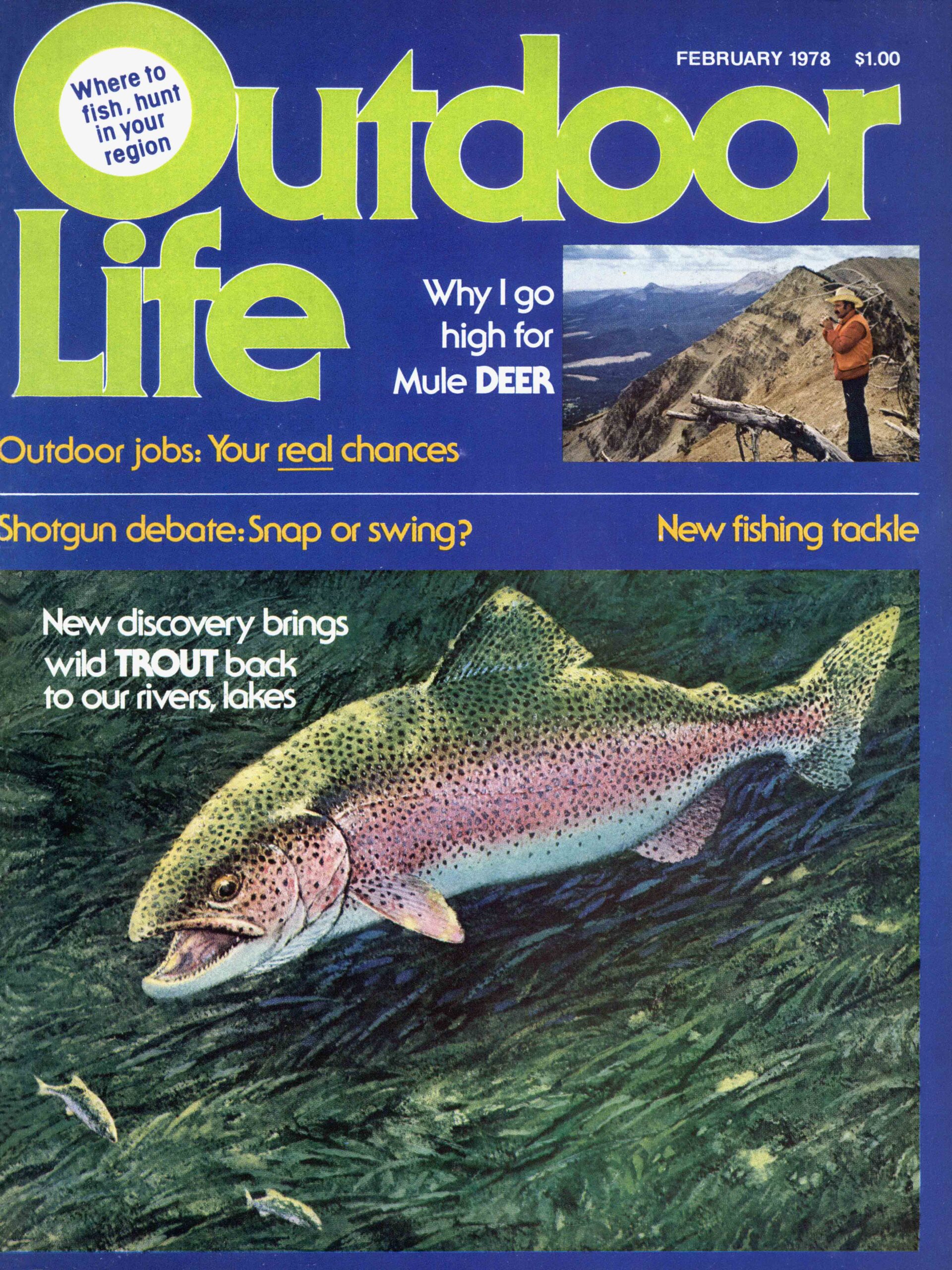
But before we had even made our way to the trees, the guide came rushing after us and signaled for us to follow. When we got back to the place where we had split up, Bud was off his horse and waiting with his spotting scope in his hand. As soon as we dismounted he described the situation. He and the guide had spotted two bucks about 300 yards below the crest. They were both bedded down in a small thicket. One had good antlers, but they hadn’t seen the other’s head.
As Ozzie and I pulled the rifles from our scabbards, it occurred to me that we hadn’t agreed on who would have first shot. After his rifle got banged up, Ozzie had traded rifles with Bud, but we had forgotten to toss a coin for first shot. I couldn’t find a coin in my pockets, and neither could the others. I crouched and sorted through some pea-size rocks. Then, showing my closed hand to Ozzie, I said, “I have either one or two stones in my hand. Take a guess.”
“Two.”
I opened my hand to reveal a single gravel. I had the first shot.
Crouching low and keeping behind the crown of the hillside, we made our way to the cover of some evergreen scrub. In a similar stand of scrub on the opposite side of a deep cleft, I could see one deer lying down with his head up. One foreleg was tucked under his body and the other stretched out in front. It was a bigbodied deer and had a good rack. A few feet away on the uphill side of him I saw the rump of the other, but that was all.
Though the patch of scrub gave us good cover, it was impossible as a shooting site. When I got into a sitting position, the crown of the rise was so high that it blocked out any sight of the deer. I had to get closer to the brow of the crest to get a clear shot. But that meant I would have to cross open ground. The buck would surely spot me.
Since I couldn’t get a clear shot any other way, it was a have-to-risk. And even if the bucks broke and ran, they would have to cross 200 yards of open ground before getting to the next cover. I would have a running shot in any event.
Crouching low, I moved quickly to the brow of the crest and hastily settled into a sitting position with the rifle’s sling looped tightly over my left arm. The buck saw me and jumped up but didn’t run.
This standoff I described at the beginning of this story lasted for several minutes. By then the others had gathered around me.
Suddenly the hidden buck took a step forward. I got a shadowed look at one side of his antlers. It was wide and high. But I could only see one side. What if the other side was deformed or even missing?
As if to settle my doubts, the buck looked back over his shoulder and gave me a clear look at the other half of his rack. It was a perfect match, and the rack was better than the other buck’s. Bud gave a low whistle of appreciation.
I wanted to shoot, but now the deer’s body was mostly obscured by brush. The shoulder area was clear, and as I settled the crosshairs on the open spot behind the shoulder I whispered that I was going to fire. “Not yet,” Bud whispered back. “Wait until he’s in the open.”
For a moment I heeded his advice, but the situation reminded me too much of a chance I’d had for a fine elk several years before. The bull had been partly hidden behind a tree, and though I had a good shot at the vital area I decided to wait until he was in the open. Then he turned and ran straightaway and I never got a shot.
The .280 cracked and the deer was down even before I heard the sound of the bullet hitting. A moment later the deer was back on his feet, but before he could take a step he was dead and rolling down the mountain.
The mountainside where the deer had fallen was so steep and treacherous that it took the better part of an hour to cover the 300 yards. Several times I had to back up and try another route when the rocks were too sheer to negotiate. When you go after big bucks on Sheep Mountain, you must take your chances.
This story originally ran in the February 1978 issue as “We Get High for Mulies.” Read more OL+ stories.
